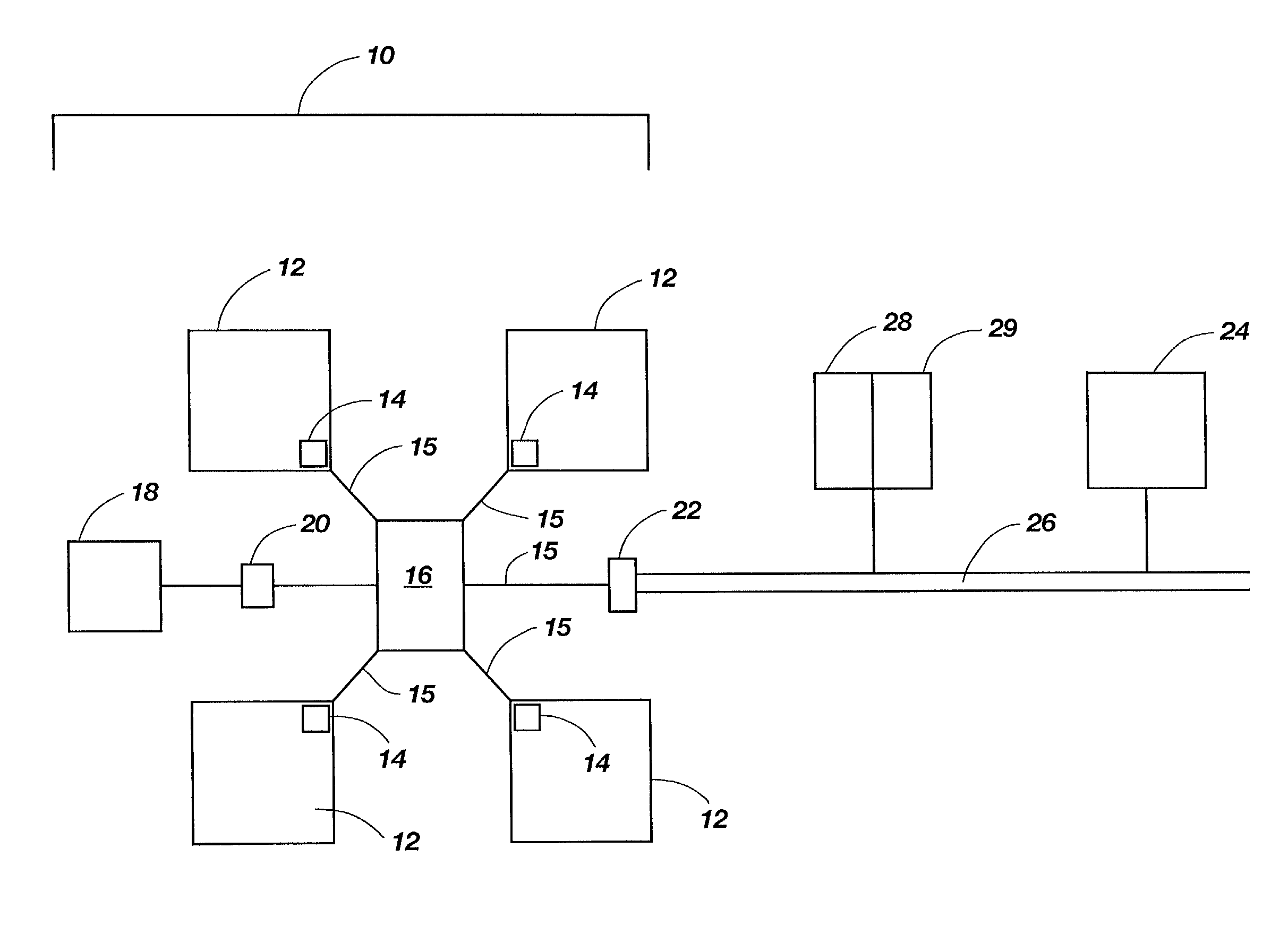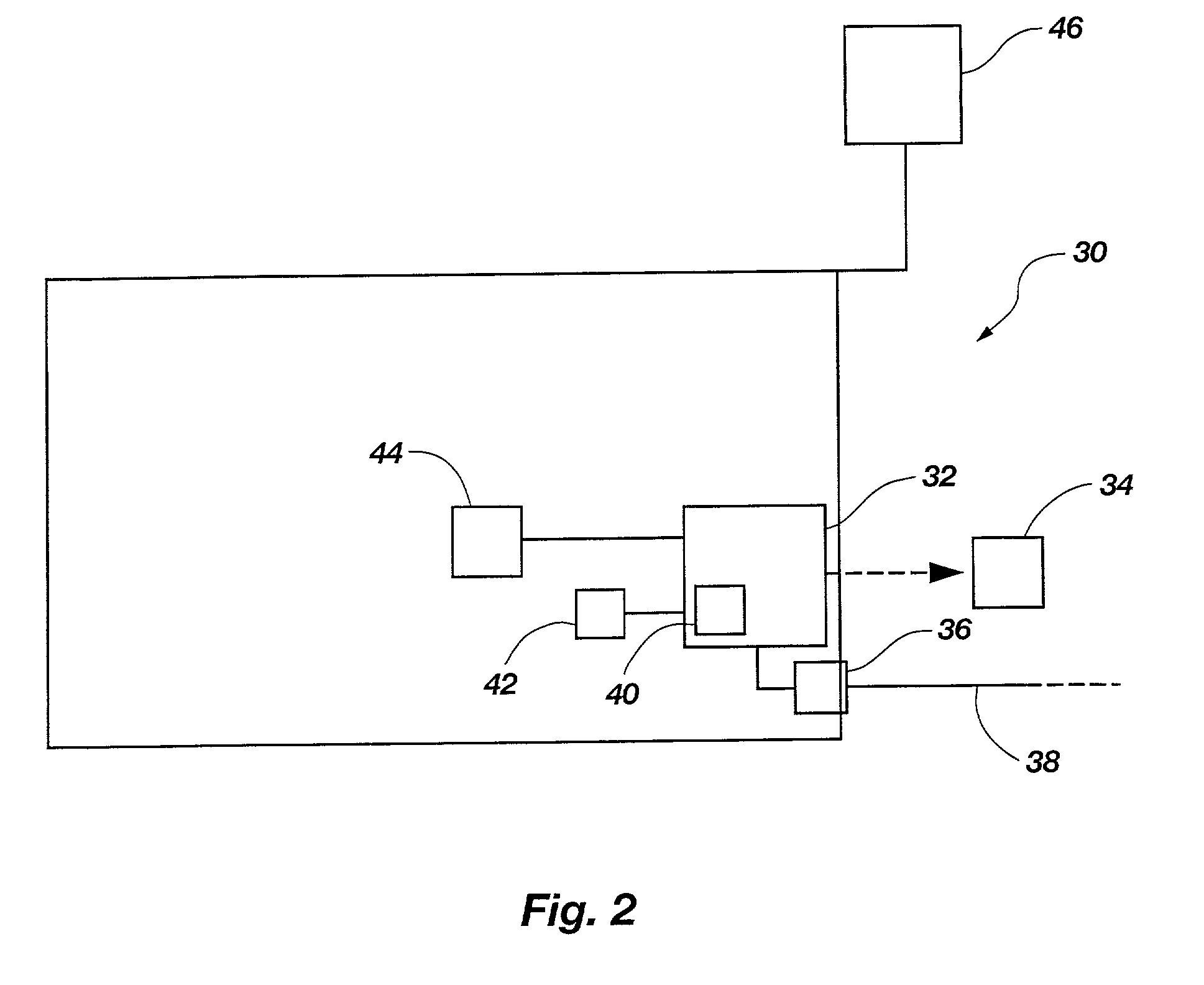Automatic download to print job retention
a technology of automatic download and job retention, applied in the direction of digital output to print units, instruments, digital computers, etc., can solve the problems of reducing the bandwidth available for data transmission, affecting productivity, and missing business opportunities, so as to improve data transmission speed, optimize bandwidth, and improve worker productivity
- Summary
- Abstract
- Description
- Claims
- Application Information
AI Technical Summary
Benefits of technology
Problems solved by technology
Method used
Image
Examples
Embodiment Construction
[0035]As illustrated in FIG. 2, a preferred device for carrying out the methods of the present invention includes a printing device 30 configured with both printer specific hardware and software and an embedded Web interfacing system for enabling access and interaction with other devices linked to local and external communication networks (“networks”), including the World Wide Web, a local area network, an intranet, the computer network of an on-line service, etc. Printer specific hardware and software of printing device 30 may be provided in any conventional printer configuration known in the art, including those associated with laser printers, impact printers, photographic printers, and inkjet printers. Printing device 30 includes one or more local displays 46, which may comprise a conventional monitor, a monitor coupled with an integrated display, an integrated display (e.g., LCD), or other means for viewing print queues, downloaded web pages, and associated data or processing in...
PUM
 Login to View More
Login to View More Abstract
Description
Claims
Application Information
 Login to View More
Login to View More - R&D
- Intellectual Property
- Life Sciences
- Materials
- Tech Scout
- Unparalleled Data Quality
- Higher Quality Content
- 60% Fewer Hallucinations
Browse by: Latest US Patents, China's latest patents, Technical Efficacy Thesaurus, Application Domain, Technology Topic, Popular Technical Reports.
© 2025 PatSnap. All rights reserved.Legal|Privacy policy|Modern Slavery Act Transparency Statement|Sitemap|About US| Contact US: help@patsnap.com



